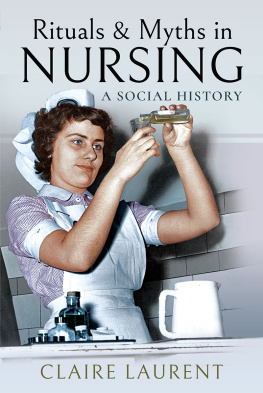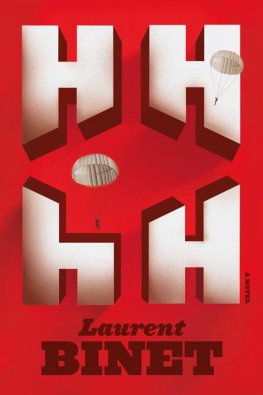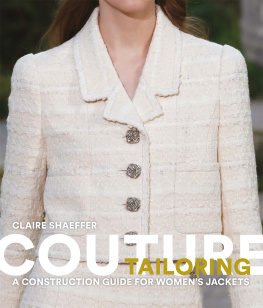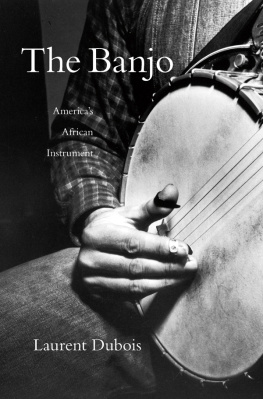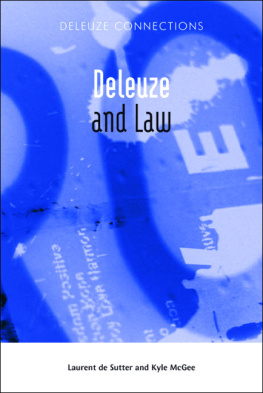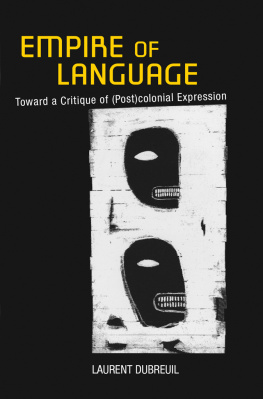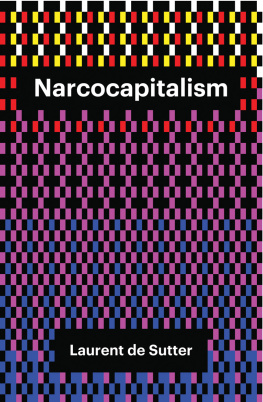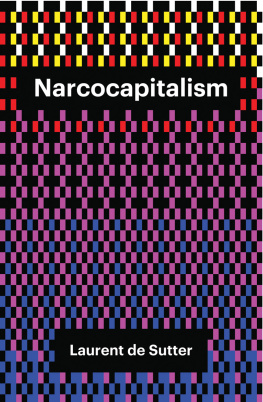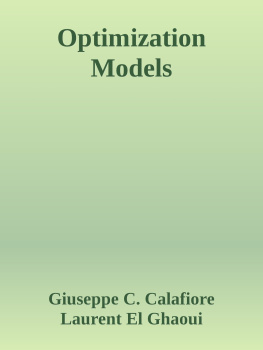Claire Laurent - Rituals & Myths in Nursing
Here you can read online Claire Laurent - Rituals & Myths in Nursing full text of the book (entire story) in english for free. Download pdf and epub, get meaning, cover and reviews about this ebook. year: 2019, publisher: Pen & Sword Books, genre: Home and family. Description of the work, (preface) as well as reviews are available. Best literature library LitArk.com created for fans of good reading and offers a wide selection of genres:
Romance novel
Science fiction
Adventure
Detective
Science
History
Home and family
Prose
Art
Politics
Computer
Non-fiction
Religion
Business
Children
Humor
Choose a favorite category and find really read worthwhile books. Enjoy immersion in the world of imagination, feel the emotions of the characters or learn something new for yourself, make an fascinating discovery.
- Book:Rituals & Myths in Nursing
- Author:
- Publisher:Pen & Sword Books
- Genre:
- Year:2019
- Rating:3 / 5
- Favourites:Add to favourites
- Your mark:
- 60
- 1
- 2
- 3
- 4
- 5
Rituals & Myths in Nursing: summary, description and annotation
We offer to read an annotation, description, summary or preface (depends on what the author of the book "Rituals & Myths in Nursing" wrote himself). If you haven't found the necessary information about the book — write in the comments, we will try to find it.
Rituals & Myths in Nursing — read online for free the complete book (whole text) full work
Below is the text of the book, divided by pages. System saving the place of the last page read, allows you to conveniently read the book "Rituals & Myths in Nursing" online for free, without having to search again every time where you left off. Put a bookmark, and you can go to the page where you finished reading at any time.
Font size:
Interval:
Bookmark:

RITUALS & MYTHS
IN NURSING
A SOCIAL HISTORY
CLAIRE LAURENT

First published in Great Britain in 2019 by
PEN AND SWORD HISTORY
An imprint of
Pen & Sword Books Ltd
Yorkshire Philadelphia
Copyright Claire Laurent, 2019
ISBN 978 1 47389 661 1
eISBN 978 1 47389 663 5
ISBN 978 1 47389 662 8
The right of Claire Laurent to be identified as Author of
this work has been asserted by her in accordance with the Copyright, Designs and Patents Act 1988.
A CIP catalogue record for this book is available from the British Library.
All rights reserved. No part of this book may be reproduced or transmitted in any form or by any means, electronic or mechanical including photocopying, recording or by any information storage and retrieval system, without permission from the Publisher in writing.
Pen & Sword Books Limited incorporates the imprints of Atlas, Archaeology, Aviation, Discovery, Family History, Fiction, History, Maritime, Military, Military Classics, Politics, Select, Transport, True Crime, Air World, Frontline Publishing, Leo Cooper, Remember When, Seaforth Publishing, The Praetorian Press, Wharncliffe Local History, Wharncliffe Transport, Wharncliffe True Crime and White Owl.
For a complete list of Pen & Sword titles please contact
PEN & SWORD BOOKS LIMITED
47 Church Street, Barnsley, South Yorkshire, S70 2AS, England
E-mail:
Website: www.pen-and-sword.co.uk
Or
PEN AND SWORD BOOKS
1950 Lawrence Rd, Havertown, PA 19083, USA
E-mail:
Website:
Nurse from Glasgow Royal Infirmary 1967. (The Herald and Times Group)
Nurses dining room Western Infirmary Glasgow 1960s. (Copyright NHS Greater Glasgow and Clyde Archives)
Setting up a blood transfusion; Western Infirmary, Glasgow 1960s. (Copyright NHS Greater Glasgow and Clyde Archives)
Student nurses in lecture 1960s Western Infirmary, Glasgow. (Copyright NHS Greater Glasgow and Clyde Archives)
Patient being nursed in an iron lung. (Wellcome collection)
Student nurse St Helier Hospital, Carshalton, 1943. (Wellcome collection)
Inserting a chest drain. (Wellcome collection)
West Midlands Sanatoria. (Wellcome collection)
Patient in traction. (Wellcome collection)
Nurses on a ward early twentieth century. (Wellcome collection)
London Hospital badge. (RCN Archives 2015)
Royal Infirmary Edinburgh School of Nursing. (RCN Archives 2015)
Manchester Royal Infirmary badge 1973. (RCN Archives 2015)
Glasgow Royal Infirmary badge.
Sam Gamgee who in 1880 invented Gamgee tissue, an absorbent cotton wool and gauze surgical dressing.
E3 ward Hope Hospital, Salford 1927. Alice Clegg first on left. (Courtesy of Rosalind Gooley)
Headscarf embroidered with the initials of nurses who wore it when they were operated on by surgeon Mr James Sherren at the London Hospital. (Copyright Barts Health NHS Trust Archives and Museum)
Nurse No. 1 Ethel Gordon Fenwick. (Courtesy Barts Health NHS Trust Archives and Museum)
All kinds of medicines and mixtures made it onto the drug trolley circa 1920s. (Copyright Barts Health NHS Trust Archives and Museum)
This book exists thanks to the generosity of all those nurses, past and present, who have entrusted their stories, their memories and best of all their humour to a project that can only be summed up in the question: Egg white and oxygen, why?
Special mention goes to Mary Anne Laurent without whose prodigious memory and endless support this book would not have been written. To my aunt Molly whose reminiscences enlightened me about both nursing and the richness of my own medical/nursing family and to Mary Stiff, my first interviewee, who gave so generously of her time and who has sadly now passed away. Molly and Mary both lent me their nursing text books which proved an invaluable source of nursing rituals.
I would like to thank St Bartholomews Hospital Set 16 for their contributions, especially Anne-Marie, Jackie, Jacqui, Judy, Liz and Susie. I would like to extend my thanks to The League of St Bartholomews Nurses, and in particular for the support of past president Professor Maggie Nicol, and to the many nurses from Barts wider family for their fantastic support, in particular Alison and Alison, Caroline and Caroline, Eileen, Eunice, Gill, Jean, Lee, Paula, Rosie and Thelma. My thanks also to Alison, Berni, Cate, David, Diana, Dianne, Erica, Gay, Gail, Jeanne, Kathy, Kayte, Linda, Liz, Martin, Mary, Melissa, Michael, and Sarah as well as David Barton, Tom Bolger, Natalie Doyle, Christine Hancock and Ann Keen, who shared their memories. You can continue to follow the progress of this book at Facebook.com/Rituals and Myths in Nursing.
Grateful thanks are also extended to:
Wendy Moore and Janet Snell, who provided so much good advice and editorial guidance. To Hina Pandya who introduced me to the dark arts of social media and to Alan who long advocated that I write about nursing and patiently proof-read pages of hospital jargon. To Emma, Victoria and Jake for their support and encouragement.
Archivists, Kate Jarman, Barts Health NHS Trust, Alistair Tough of the NHS Greater Glasgow and Clyde Archives and Louise Williams at Lothian Health Services Archives, for their interest, time and support.
The Royal College of Nursing Foundation, Teresa Doherty, Royal College of Nursing Joint Archives and Information Services Manager. Fiona Bourne, RCN Archives Operational manager and Neasa Roughan, RCN archives specialist.
Disclaimer
For clarity and consistency, the pronoun she has been used when referring to nurses, except when a man is specifically quoted. The pronoun he has been used when referring to doctors and patients except where the gender is specifically noted. It could be said that this sums up the culture still embedded in our hospitals and wider society.
Those who have been quoted have given permission to use their names. In some cases pseudonyms have been used. The names of any patients have been changed to protect their identities.
The Author has endeavoured and made best efforts to trace all copyright holders and ensure that the correct credit is given to all copyright holders but if a copyright holder could not be located and should they make themselves known to the Author and/or the Publishers then they shall be properly credited in any future reprint of the Work.
Most aspects of basic nursing, including the nurses approach to the patient are steeped in tradition and passed on from one generation of nurse to another. Too often they are routine without rhyme or reason. They are learned by imitation and taught with little if any reference to the underlying sciences.
Virginia Henderson, 1967
Nurses are depicted as female and caricatured as angelic, sexy or fierce. From the tabloids angels to the Carry On films formidable Hattie Jacques matron and buxom Barbara Windsor, to Nurse Ratched in One Flew Over the Cuckoos Nest , nurses are rarely just people doing a job. They are angels, dragons or sex objects.
This, despite Florence Nightingale leading the charge more than 100 years ago, to establish nurses as a workforce of demure, clean and educated girls, far away from the Sairey Gamp slatternly image of Charles Dickens fame.
While Florences philosophy of nursing was about building a professional body of educated women with the right personal qualities, it could be argued that Ethel Gordon Fenwick (ne Gordon Manson) took the profession to the next level. At the age of 24 in 1881, she became matron of St Bartholomews Hospital. She formalised the nurses training and improved their working conditions. She resigned her post in 1887 when she married Dr Bedford Fenwick but campaigned for the next thirty years to establish a nationally recognised register of nurses.
Font size:
Interval:
Bookmark:
Similar books «Rituals & Myths in Nursing»
Look at similar books to Rituals & Myths in Nursing. We have selected literature similar in name and meaning in the hope of providing readers with more options to find new, interesting, not yet read works.
Discussion, reviews of the book Rituals & Myths in Nursing and just readers' own opinions. Leave your comments, write what you think about the work, its meaning or the main characters. Specify what exactly you liked and what you didn't like, and why you think so.

